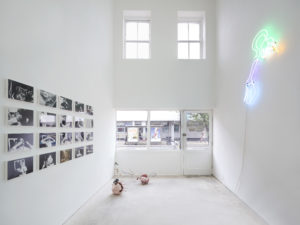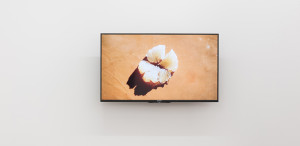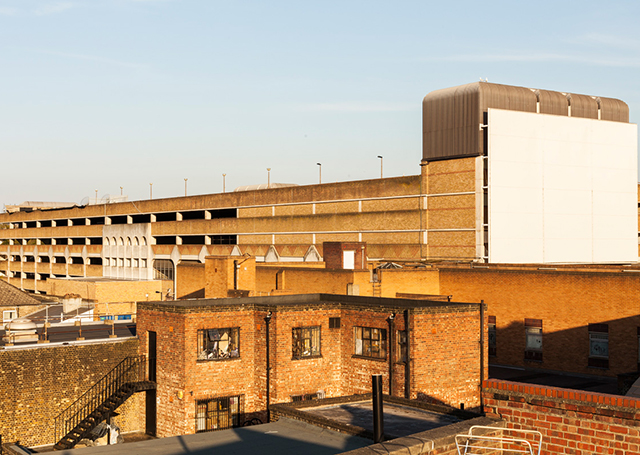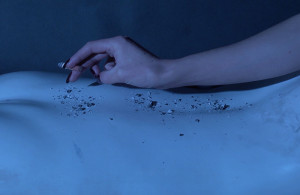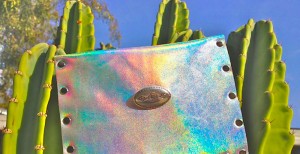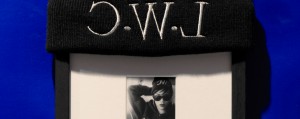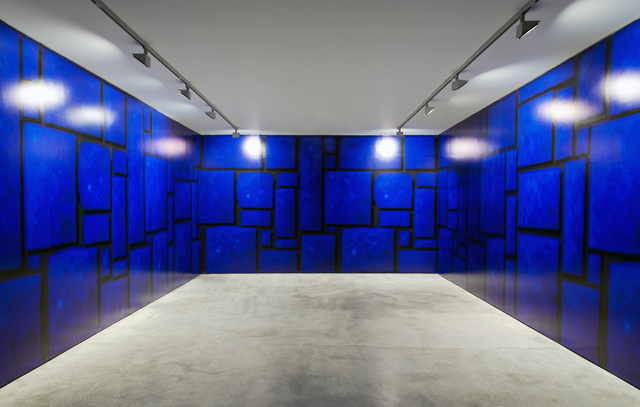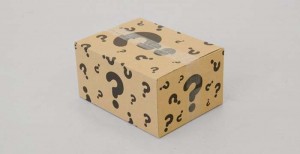“Material Art Fair es la unica feria de arte contemporaneo en Mexico que se dedica a las practicas emergentes”, reads the homepage of the Material Art Fair website. The third edition, running from February 4 to 7, gathers more than 60 international galleries, project and artist-run spaces together in Mexico City. Settled on the sixth floor of the Expo Reforma –a 60s building caught between its own decay and attempts at some modernization near the historic city center and financial district –the event manifests in a maze where ‘emergent’ art spaces and practices mix and mingle in a kind of general mess. The hip set indeed exchange their natural habitat of alleys and signs for a spatial organization where booths follow one another in a row. The advantage: every way enables a round trip between the air-conditioned restaurant, the bookstore, the reception, the toilets, and almost nothing escapes the viewer.
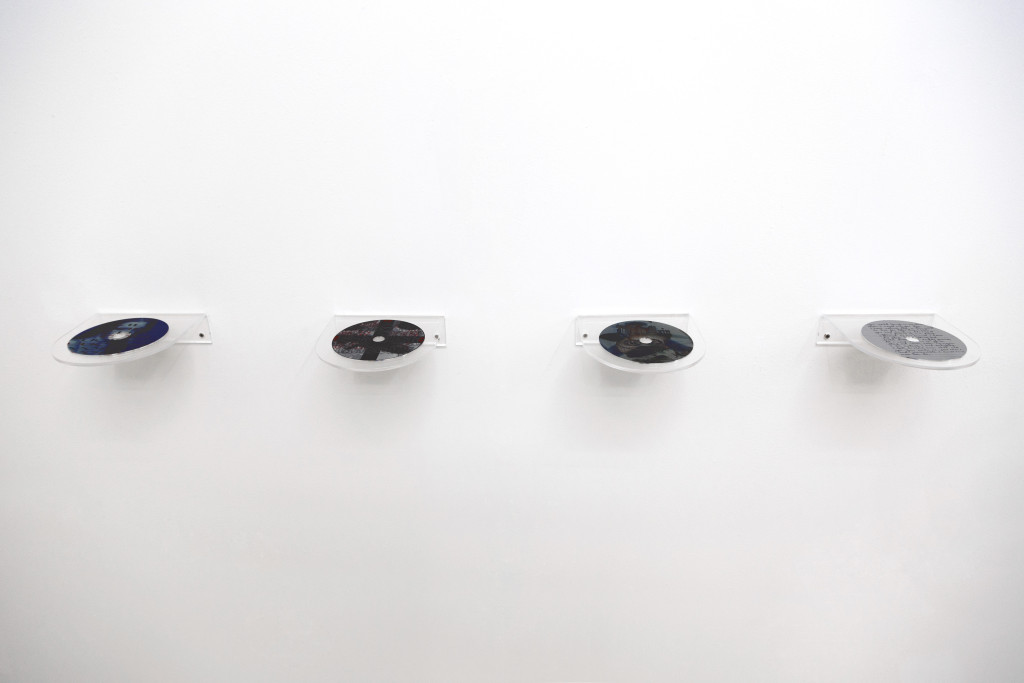
At Mexico City-based Lodos‘ booth two large tapestries, vintage and traditional looking, are suspended on both sides in its center, creating a partitioned space. Forced to sneak behind these compositions by French Mexico City-based artist Yann Gerstberger, these images or landscapes made of tinted floorcloth precede another mixed vision of the world in New Galerie’s installation. At one’s feet, silicone sculptures that look like different colored ox tongues by New York-based Olivia Erlanger prefigure the life-sucking cannibal scenario of movies and images by fellow NYC artist Darja Bajagić. Perched between thriller, pornography and death metal culture, one of her printed CDs hung on a wall reads, “Kill this fucking world”. It appears beside a series of C-print on hand-carved foam board –a blurry image of a goat, a sign that reads “Does that mean they are friendly” –by Vienna-based artists Anna-Sophie Berger’s completing the surgical picture.
Further on, Springsteen, a project established in 2013 by Baltimore duo Amelia Szpiech and Hunter Bradley, presents a series of paintings and found-objects by Erika Ceruzzi, along with a selection of robotic sculptures by Colin Foster including one described in a review on Artspace as “a ‘modified’ bug zapper that now works as a sculptural object while still killing bugs”. At Exo Exo, Brooklyn-based duo Bending Binding and their ‘Kooling Systems’ air conditioning condenser and aerosol paint explore the future stakes of past technologies in an ultra-productive and fast, yet failing and polluted globalized world.
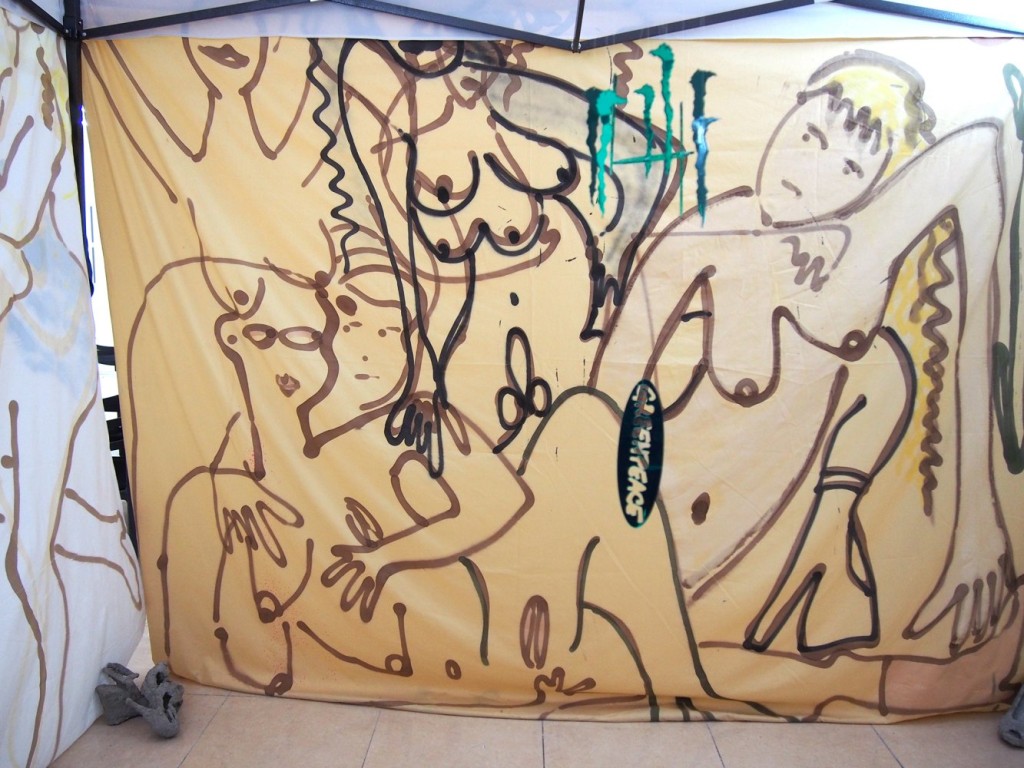
One of the most interesting stories of this third edition of Material Art Fair is San Diego mobile project SPF15. Hidden beside the VIP restaurant, it occupies a space between projection, performance, discussion platform and what looks like a fire escape. “I’m sitting on the beach; it’s not particularly warm”, writes Morgan Mandalay, director and founder of the project in his announcement letter, “Despite the tales, it’s not exactly beach weather year round in San Diego.” The exhibition series was first initiated under the Sunday Project before changing its name to SPF15 Exhibitions –not just a UVA protection guideline but short for ‘Sunday Project for 15 Exhibitions’: “Again I dive in head first with curiosity and knowing it will be a project of experimentation; a lab”.
More specifically, SPF15 is physically a three-by-three meter pop-up canopy on the beach. While it operates as a gallery, it is also conceived as a kind of social sculpture in which each exhibition is also a collaboration with a changing tent. For the fair, the canopy is an overall installation with works by Michael Assiff, Chelsea Culp, Tim Mann, Josh Reames and Kim Schreiber. Always creating a fiction or a scenario connected with this context and being able to settle everywhere, the display this time pays tribute to the body. Culp’s large sculpture ‘Party Panties’ (2015) is a drunk, disenchanted and failed one. “The beach as a space ignites the mutual feelings of titillation and shame for that titillation”, writes Morgan in an email addressing the choice of tent-as-installation-area. “The beach to me has always operated as a space to explore dualities: Land and sea, leisure and labor, the sexuality of the body and its banality.” Everything is about borders –physical, political, poetical.
“- How it works? – Clay”, says the text by Schreiber presented on a tablet at the SPF15 tent entrance. Inside is a ceremony, a kind of initiation rite, exposed but intimate; mobile, fictive, hidden. It’s a transitive space, a place of passage, learning, much like Korakrit Arunanondchai‘s ‘Painting with History in a Room Filled With People With Funny Names 3’ (2015) film, this time showing as Lodos’ gallery space in Mexico City’s San Rafael and presenting a spiritual, social and almost technological portrait of the artist.
It’s a portrait that Yves Scherer extends well beyond himself, interring it into a beautiful, abandoned building in Mexico’s Juárez district with his Snow White and the Huntsman exhibition. Organized by joségarcia, mx and Attilia Fattori Franchini, it takes gossip and fan fiction as a starting point, reconstituting these stories into a physical context of immersive environments. Photos of actress Kristen Stewart and references to her public love scandal with Snow White and the Huntsman director Rupert Sanders appear alongside drawings and photos of Scherer himself to recreate the ‘rumor’ in his own image. Iconic representations of 19th century icons, pictures from Hollywood movies and tabloids, as well as personal pictures of the artist are arranged, framed and under glass as compositions or collages that put all these narratives on equal footing. What is real? What is invented? What is media?
An interweaving or imbrication of fictions, one within the other, is at work here. As with the Material Art Fair booths following one after the other, the VIP restaurant containing the SPF15 project containing the story of San Diego’s beach, and Arunandonchai’s film telling the story of an artist becoming an artist, there’s something ambiguous at play here; something ungraspable yet contained between the being, wanting, acting and telling of art and existence. **
Event photos, top right.
